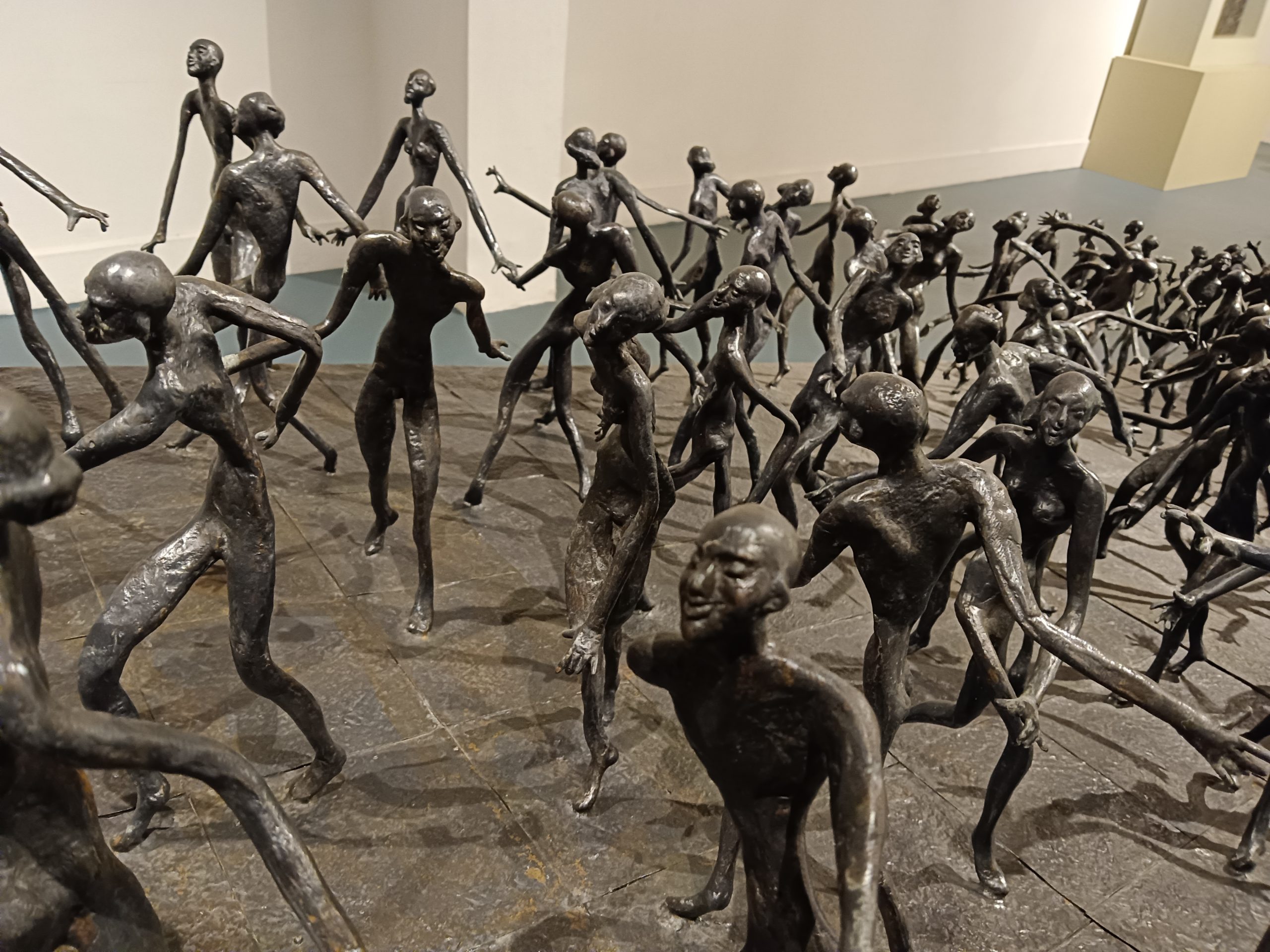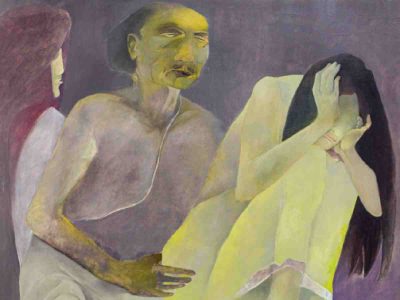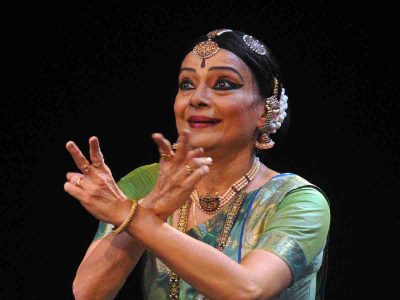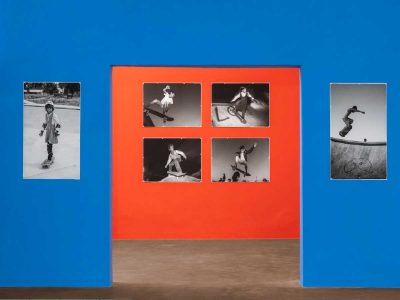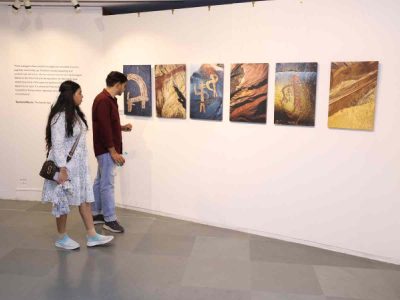During his school days in Shantiniketan, in 1998, sculptor KS Radhakrishnan encountered a young Santhal man ‘Musui’, who became his inspiration for the majority of his artwork.
Over the years, the artist has transformed Musui into many alternative personalities such as a saint and a rickshaw puller. Later, he created Musui’s female counterpart, Maiya, who is a figment of his imagination. She evolves into a writer, a goddess and a graduate from Shantiniketan.
In his first retrospective called ‘On The Open Road’ held in Bikaner House, there are multiple sculptures of Musui and Maiya, each intriguing the viewer with their supple body and free movements.
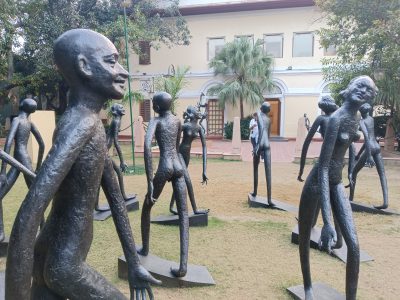
Musui and Maiya are part alter egos of the sculptor, and part fictional characters through whom Radhakrishnan has been exploring the world and sharing his perceptions with us, with the assumed detachment of a third-person narrative, notes professor R Siva Kumar, curator of the exhibition.
“Musui and Maiya are look-alikes divided by gender, and by mirroring each other and by metamorphosing into an endless series of ‘others’, like children playing roles, they mock our sense of immutable identity and make us recognize the sameness encrypted into differences.” says Kumar.
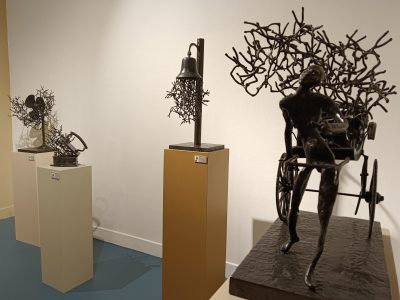
In the exhibition, visitors were particularly intrigued by the Musui On The Ramp, where the larger-than-life sculpture of Musui stands on the ramp teeming with tiny figures. At one glance, Musui looks like a divine god, where the tiny miniature on the ramp suggests everyday reality.
Another fascinating work at the exhibition is Freehold, which carries the spirit of a unique social and cultural world of Musui and Maiya.

“The original Santhal models, Musui and Maiya, may have faced challenges due to age and life’s tough experiences. However, in sculpture, their counterparts symbolize a resilient energy that can’t easily be subdued,” says art historian Ranjit Hoskote.

The ‘Freehold’ figures express a blissful demeanor, unaffected by the changing seasons, historical uncertainties, and the pressures of economic and political changes. Transforming into various avatars, Musui and Maiya embody diverse people and situations, spanning different eras and cultures, according to Hoskote.
Of the many human figures, the tiny figures of Musui and Maiya, which from a distance look like human sticks, represent the play of turning one into many and many into one, according to Kumar. These figures are often accompanied by larger sculpture, often repetitive but at the same time fascinating.
‘For Sculpting A Song’, an artwork which features a table fan and tiny human figures, the artist says, “Bronze as a sculptural medium usually evokes big and solid pieces. But in these works, I found it very exciting and liberating to break that paradigm of bronze sculpting and work with these very small, seemingly weightless pieces to create insubstantial presences like smoke or aroma.”
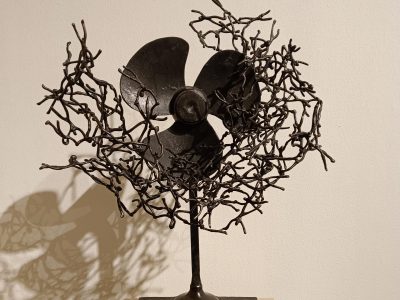
For him, the tiny human figures are works of instinct and feeling, not of planning or calculation — where the space of his childhood becomes an artistic inspiration, such as the idli maker, the pot, the angithi, or the table fan.
“Trying to sculpt that atmosphere of my land, the smell of home, the kitchen’s warmth, or the fragrance of food, is like trying to sculpt a song,” the artist says.
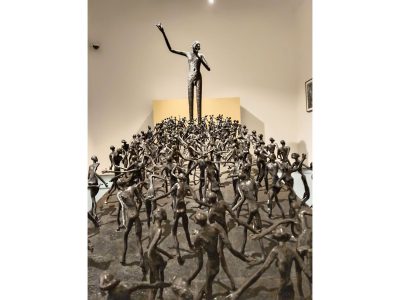
Outside the Nyva Gallery, where the exhibition is being held, artist’s sculptures called ‘The Crowd’, feature the everyday human beings like the visitors, and connect with them personally. These sculptures could be anyone, perhaps a crowd in a railway station or a marketplace.
According to the curator, the individuality of each sculpture in the crowd are temporarily subsumed, but not entirely erased, allowing the viewers to connect with them individually as well as become a part of the crowd.
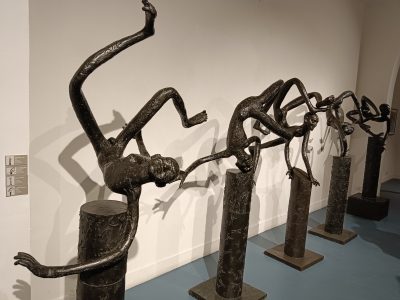
The exhibition will be held till December 14.

